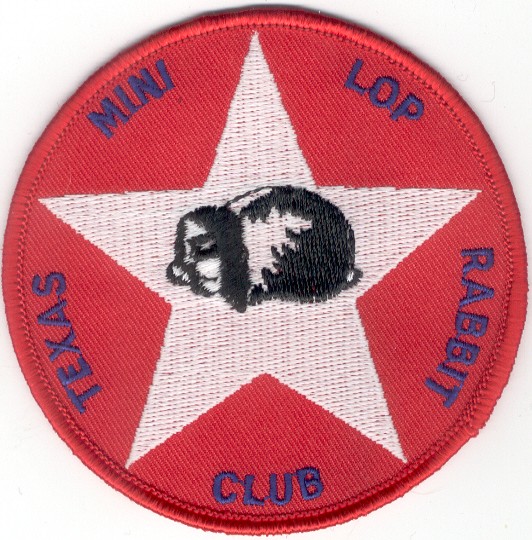|
Groups
Agouti -
A hair shaft that has three or more bands of
color with a definite break between each color.
The head feet and ears commonly have
ticking.Eye circles,
belly, under jaws, underside of tail and
triangle are much lighter and in some cases
white. Agouti rabbits come in the following
colors; Chinchillas (Black, Blue, Chocolate,
Lilac, Sable, Smoke Pearl), Chestnut Agouti
(Black or Chocolate basic colors), Lynx, or
Opal.
Broken -
Any recognized breed color in
conjunction with white and carrying the breed
pattern.Body
patterns may be spotted, patches or a blanket.
Head markings should show color on the nose,
both eye circles and both ears.
Tri-Colored Tri
- Colored group is to consist of the
following colors in conjunction with white:
Dense black and golden orange, or lilac and
golden fawn. Colors must be evenly distributed.
Blacks and chocolates should have brown eyes;
Blues and lilacs should have blue-grey eyes.
Pointed
White -
Color is to be a white body, with points of
black, blue, chocolate or lilac on the ears,
feet, legs and tail. Their eyes should be pink.
Self -
Self animals are to have the same color over the
body, head, ears, feet, legs and tail. Colors
are Black, Blue, Chocolate, Lilac and white.
Shaded -
Shaded animals show gradual transition of a
basic color, usally
from dark to light. More than often darker
colors appear on the back, head, ears, leg
areas, feet and tail. Colors include: Frosted
Pearl (Black, Blue, Chocolate or Lilac shading
color.), Sable, Sable Point, Seal,
Smoke Pearl, Tortoise
(Black, Blue, Chocolate, or Lilac Shading
colors).
Ticked -
Ticked animals have guard hairs throughout the
coat either solid or tipped, with a distinct
color from the under color or surface color.
Colors include: Silver/Silver Fox (Black, Blue,
or Fawn Basic), Steel (Gold or Silver Tipping;
Black, Blue, Chocolate, Lilac, Sable or Smoke
Pearl).
Wide Band -
Wide band animals show the same basic coloration
throughout the rabbit, though they may show
lighter coloration around the eye circles,
inside the ears, under the tail, jowls or belly
areas. Colors include: Cream, Fawn, Orange and
Red.
Return to top
Points
|
General
Type |
80 |
|
Body |
43 |
|
Ears & Crown |
12 |
|
Feet, Legs & Bone |
5 |
|
Fur |
10 |
|
Color & Markings |
5 |
|
Condition |
5 |
|
Total
Points |
100 |
|
Body (43)-
The general aspect of the Mini Lop is
the massive, thickset body. Their
shoulders are to be broad, well filled,
with good depth and rising to a slightly
heavier hindquarter which is deep broad,
smooth and rounded; the lower hips
should also be well filled. In general,
Mini Lops are
very muscular, compact and balanced.
Does can have dewlaps but should remain
balanced with the rest of the rabbit. -
Shaped similar to a basket ball. |
Faults -
Flatness over the shoulders or
hips,
undercut or chopped off hindquarters,
long narrow bodies & overly large
dewlaps.
|
|
Head (20)-
The head should be set close to the
body, strongly developed and sturdy
without being too narrow. The crown
should be boldly arched and there should
be a slight curvature of the skull from
the base of the crown to the nose. -a
Bull Dog type head |
Faults -
Long, narrow head, pointed nose
|
|
Ears &
Crown (12)-
The ears should hang down close
to the cheeks, be in proportion and
balance with the size of the head and
body. They should be well furred and
well rounded at their
extremity's.
- a bold, wide horseshoe shaped crown
which make the ears lop, instead of
winging out to the sides (air plane
ears) |
Faults -
Narrow ears, very thick or thin ears,
thinly furred ears, ear openings turned
away from head, poor ear carriage.
|
|
Feet, Legs
& Bone (5)-
Thick, short, straight and heavy leg
bones. Broken pattern group toe nails
may be either light or dark; a
difference in pigmentation between rear
and front toenails is permitted; All
front toe nails should match and all
rear toe nails should match. |
Faults -
Extremely fine bone, Unmatched toenails
in the broken group.
Disqualification- General toenail color
disqualifications apply on all solid
pattern animals. |
|
Fur (10) -
Coat should be glossy and uniform in
length, very thick and dense, with a
good rollback. |
Faults -
Silky, long, harsh, thin or
extremely shot fur. |
Color &
Markings (5)-
Solid pattern is to
include all recognized colors within the
recognized groups.
The broken pattern is to
include any recognized color within a
recognized group in conjunction with
white. It is preferred for the
brokens to
have a butterfly like pattern on the
face, solid color encircling the eyes
and solid colored ears. The body color
should be evenly distributed in patched
or blanketed markings. The rear feet may
be white, colored, or partially colored.
Half of the color points for
brokens go
to color, the other half to their
patterns. |
Faults -
Excessive white hairs in the
solid pattern group,
Brokens with
few face markings or partial nose/eye
markings.
Disqualifications-Solids
with excessive white hairs.
Brokens
with less than 10% coloration., no head
markings
|
|

 Texas Mini Lop Rabbit
Club
Texas Mini Lop Rabbit
Club